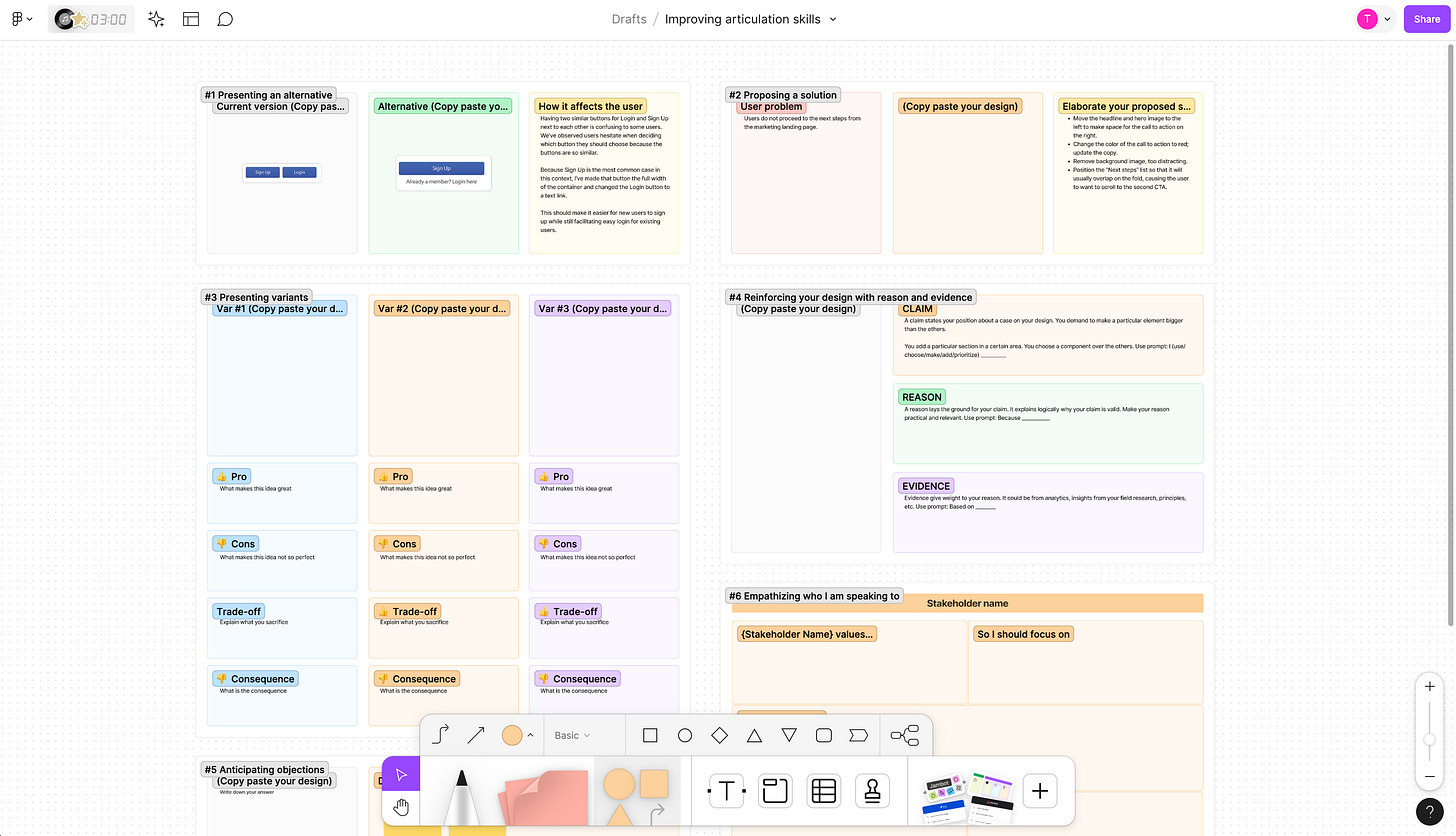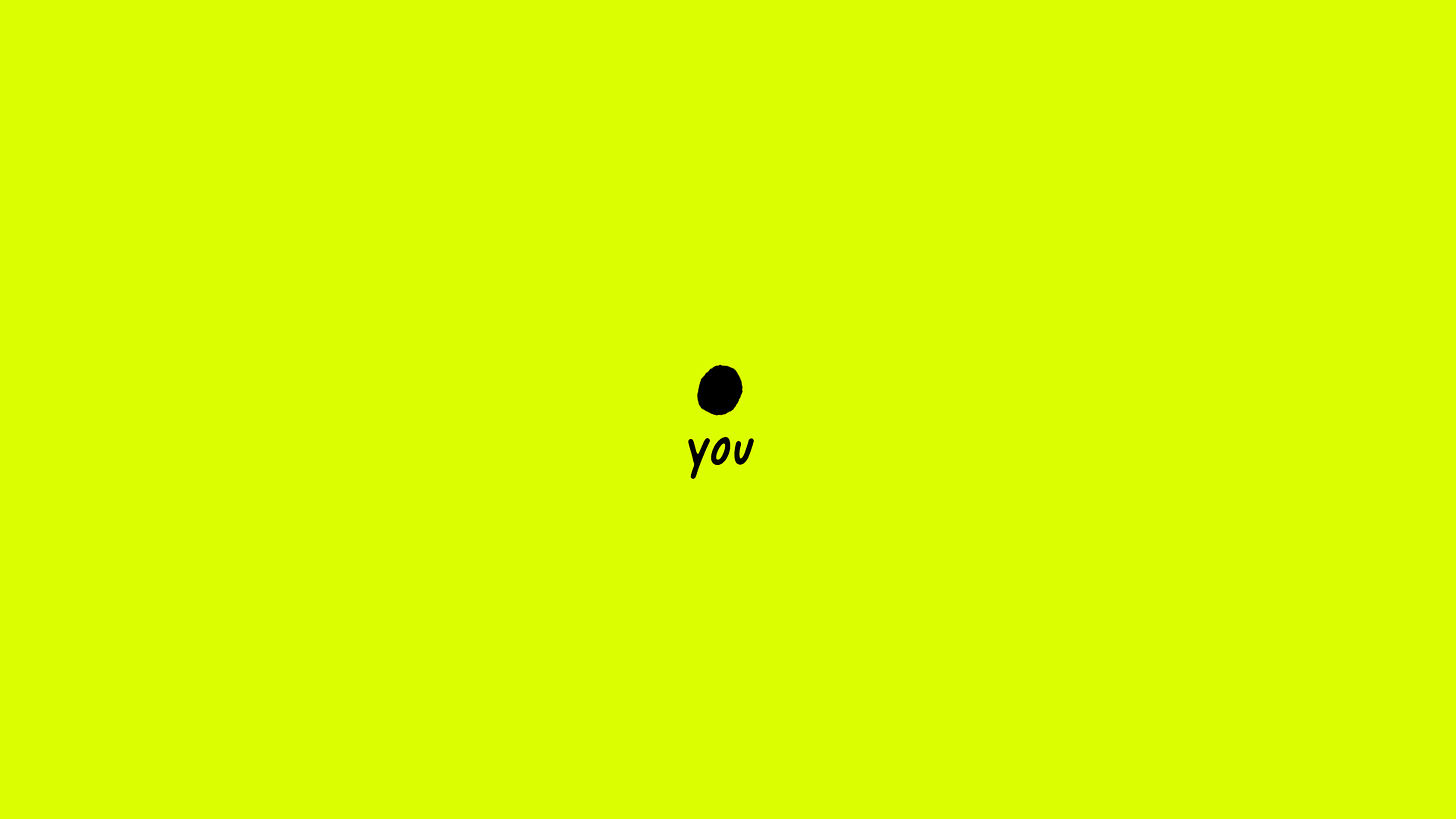Duolingo's unethical design? Improving articulation skills. Influence others
Monthly Issue #2 – May 2024
Hi buddy,
I hope all is well with you.
I've been low on energy (again) for working on my side project: writing on Substack and sharing stories on my Instagram.
After some reflection, I realized one of the reasons was my lack of a structured system for producing content. I relied on serendipity acts; it is fun but exhausting, especially with a full-time job.
So, I began a little quest (still work-in-progress) to restructure Design Buddy, create a content operating system, and give it fresh branding.
This month, our topics will include:
Insight: Is Duolingo unethical?
Tool: Improving articulation skills
Mindset: You can't control everything, but you can at least influence.
Insight:
Is Duolingo unethical?
I suppose you know Duolingo, the bite-sized, gamified language-learning app with a green owl as its mascot.
I’ve been using this app again since I moved to the Netherlands a couple of months ago to help me learn basic vocabulary and structure.
I’m on my 107th streak as I write this.
I've been quite slow these past few weeks and have used my streak freeze to maintain my streak without practicing. I love it so far, though maintaining habits is not easy. Experts say that habits become stronger and stickier after 66 days. However, in my case, they haven't become stronger—only stickier—in maintaining the streak.
Last week, I stumbled upon a LinkedIn post from the VP of Design at Duolingo. He shared new job openings and discussed how their illustrations have a real business impact. He referred to their app icon as changing from a cute design to a sadder, older one, which has been widely discussed across the internet and has driven numerous learners to open their app and complete a lesson.
What is interesting is that the opinions are quite polarized.
Some people love the idea as a form of motivation, while others feel it's unethical, deceptive, and guilt-trips people. Meanwhile, when I went down the rabbit hole, I found that people on TikTok and Twitter were being hilarious about the sad, old Duo. I hope they are not buzzers.
At first glance, I thought it must be a marketing strategy to gain attention.
The Head of Social responded that Duo's old and sad face was due to Duo being tired of having to remind everyone to do their lessons.
Some people theorized that the melted Duo face is part of a global warming campaign.
One Reddit post mentioned that the old and sad face has been removed.
However, I have a theory that it was a combo of marketing and a part of a growth experiment to reactivate learners.
The old and sad Duo could be part of a strategy to improve the reactivation rate. According to their definition, this refers to learners who are active today and were also active in the past month (but not the past week). Based on their blog post about their growth model, the reactivation rate is one of several movable metrics that are part of the breakdown of Daily Active Users (DAU).

Upon deeper analysis and asking my wife who is an NLP practitioner (Neuro-Linguistic Programming), or in other words, a behavioral/self-development coach: Duolingo is trying to tie a behavioral psychology concept called negative reinforcement.
In theory, negative reinforcement is a technique used to strengthen or increase behavior by removing or avoiding a negative condition.
In Duolingo’s case, when people see the old and sad face, they feel compelled to make that face cute again. They then log in and continue learning with the app. Once they make Duo happy or normal again, the individuals feel better and also receive rewards, streaks, and experiences after learning.
However, negative reinforcement is like a double-edged sword; it can either motivate people to build new behaviors or deter them.
Some people say they don't want to see the depressing Duo icon. They dislike it because it makes looking at their phone less calming and feel shaming.
So, would you say the old sad Duo is unethical or deceptive, or is it not? Could it be similar to when your mom was sad or angry because you didn’t do your homework?
It’s hard to say.
You can say it’s manipulative because it influences or controls someone’s behavior. However, it’s not quite manipulative, we should look at the different components:
Does it merely benefit the business at the expense of the user?
Does it lead to frustration and regret from the user’s perspective after taking the action?
Ideally, building habits should come from intrinsic motivation.
However, building a habit is simply not easy. It’s not a black-and-white situation where we should completely avoid extrinsic factors like negative reinforcement.
People have their preferences. For ‘Driven Dave’, receiving negative reinforcement could motivate him. However, for ‘Casual Calvin’, seeing an old and sad Duo might not be pleasant like a toxic girlfriend.
My feeling is personalization would solve the problem.
The same issue arises with the question ‘How do you say quitter in Spanish?’ that Duolingo sends if someone fails to maintain their daily streak. A product director at Lego shared her views on LinkedIn after her 9-year-old daughter received that question from Duolingo for failing to keep up her daily streak. It’s inappropriate for kids – meanwhile, for adults, it might work as humor. Nir Eyal, the author of a book on how to build habit-forming products, chimed in, suggesting a solution to capture the user’s age and tailor messages accordingly.
Again personalization.
Let me know what you think in the comments. Is Duo unethical, guilt-tripping learners for the sake of business growth? Or is he doing okay, serving as a helpful and witty language trainer who just needs some training on how to interact with different people?
Tool:
Improving articulation skills
I realize that as a designer, I was not trained in communication. I rarely spoke in front of people, which was daunting.
But the truth is, that communication is part of the job of a designer. The uglier truth is, that communication could be half the job.
Sometimes your beautiful design mockup isn’t powerful enough to convince stakeholders to buy into your idea. Meanwhile, on another occasion, you might find that just doing a rough sketch on paper can be powerful enough to unify all the stakeholders.
I believe that we need time to work alone in our cave to process an idea.
However, great design rarely emerges from a designer working alone in their bubble, polishing mockups. While shining, shimmering, and splendid mockups are essential, it’s important to remember that communication is also a key part of delivering exceptional work.
The premise is simple: if you don’t communicate your work clearly and effectively, others, mostly non-designers, won’t understand it → They are unlikely to buy into your concepts or be willing to take on your ideas that might require a lot of effort.
However, the problem is that your main focus as a designer is to design, not to talk—and focusing solely on design is enough to keep us busy. Hence, you probably overlooked communication—until you hit a certain wall. Like I did, then, I started reading books and watching videos about communication. My favorite ones are Larry King and Vanessa Van Edwards.
You don’t have to be like Steve Jobs doing a presentation—with great storytelling, flow, and captivating.
Realistically, some of you, like me, are not naturally good at public speaking.
Luckily, some of you don’t need to present your work directly in a meeting. In this era of remote work, some companies might prioritize asynchronous communication, where you write about your work.
Still, writing is just another form of communication.
Understanding this, I’d deprioritize public speaking and focus more on the skill called articulation.
Articulation is the ability to communicate design ideas, concepts, and solutions clearly and effectively, regardless of the form of communication.
Ironically, you spend the whole time designing something but hardly communicate about what you design.
Most designers I have worked with focus on explaining what is visible on the screen.
The fact is, you don't need to explain what is visible; rather, you should explain the underlying reasons, which would be more powerful in influencing others.
You don’t need to explain that you added large spacing there; instead, explain why the space should be larger in that specific area.
You don’t need to mention that you are using a secondary button instead of a primary one; rather, provide the compelling reason why you think a secondary button is sufficient.
You don’t need to state that you added social proof in the lower area; instead, frame your explanation as a hypothesis on why testimonials could be effective in that part.
Here’s the takeaway: When I focus on articulation, I become at least a bit more confident while presenting my designs. Then, gradually, my public speaking skills improve.
A technique that I use to practice my articulation is writing. Here are some prompts that I have found useful:
Presenting an alternative
Proposing a solution
Presenting variants
Reinforcing your design with reason and evidence
Anticipating objections
Empathizing who I am speaking to
Some of those tools are inspired by the book Articulating Design Decisions by Tom Greever. I’d also recommend to check out Design Is Storytelling by Ellen Lupton.
Mindset:
You can’t control, but at least, you can influence.
“Turn what you can't control into what you can influence.”
This is you.
As a designer, you have several things within your control:
The tools you use.
The design process you choose to employ on specific projects.
How you organize your files.
The primary and complementary software you use
How you set the guidelines,
and tons of other aspects.
However, you realize that what is within your control is sometimes not enough to produce great work. Ugh.
There are things beyond your control, and often you feel like there's nothing you can do about them.
How your stakeholders perceive the problem and the solution.
How they provide feedback.
How the product vision and roadmap are laid out.
The existing tech debt.
The technical constraints,
and more.
Indeed, you can’t control all of them. But some of them are possible to influence.
You can’t control the feedback you receive from stakeholders, but you can influence their perceptions by presenting well-thought-out and data-informed designs.
You encounter technical constraints and choose to do nothing, or you can demonstrate how overcoming certain technical limitations can lead to a greater impact. On the other hand, engaging with engineering early and often enables developers to anticipate challenges.
You always receive the set product roadmap and potential features are lined up, but you can influence it by surfacing evidence highlighting user needs, preferences, and pain points and connecting that evidence with business outcomes.
Remember: bringing in some influences can often be demotivating because you won't see the impact immediately. Sometimes, you may never see the expected effects. However, at other times, it's rewarding as you will see some efforts come to fruition.
Here’s a mindset to adopt:
In any situation, even with things that seem beyond our control, there may still be something you can do to influence how decisions are made and executed.
A small ripple can extend outward, and consistent ones will resonate across the vastness of the pond.
“Even the tiniest pebble can create ripples that resonate across the vastness of the pond.”
~ Aman Gupta, Life Transformation Coach
This mindset is inspired by the Circle of Control of Stephen Covey – 7 Habits of Highly Effective People.
Thank you for reading; I hope you find some value in my post.
See you next month!
Sincerely yours,
Design Buddy
Here are three ways I can support your growth as a designer:
Purchase my book, "The Practice of Design Practice," to adopt mindsets and practical tips on how designers can engage as lifelong learners.
Purchase my UI Kit and Design System, Nucleus to level up and accelerate your process. I also share tips, and ideas on Nucleus Substack.
Design Buddy is a free publication supported by readers like you. Subscribe to have my next post delivered directly to your inbox and consider pledging your support to help this independent publication thrive. You won't be charged unless you enable payments.
Your support makes all the difference. Subscribe and support Design Buddy today!











I don't like Duolingo's sad owl and I have felt guilt tripped. I'm not sure how I feel about it though. Currently my Duo is showing off his very big muscles. That makes me feel happier, so yes I guess it is having an affect. I want to keep him strong. That's a real good model you have provided, I could even find a use for it myself.
As usual, the writing is very insightful! I just encountered that exact problem when presenting my design alternatives to stakeholders. I'll definitely try using the tool the next time I face this situation again! Thanks for sharing!